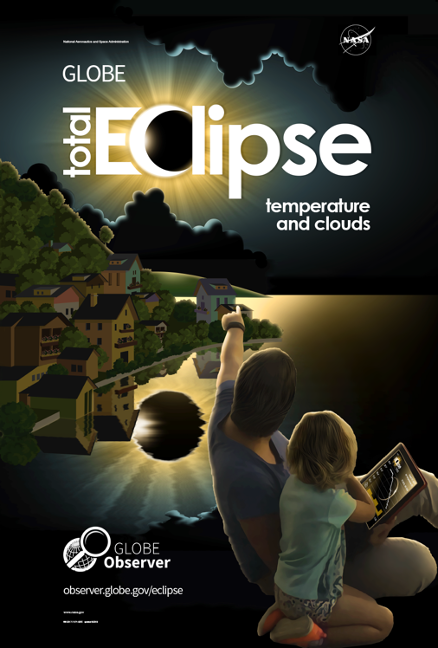Eclipse Toolkit - GLOBE Observer

Citizen scientists contributed over 80,000 air temperature measurements and nearly 20,000 clouds observations during the 2017 solar eclipse across North America, as well as hundreds of additional observations during the 2019 and 2020 eclipses in South America, and thousands of observations for the annular eclipse in October 2023. The Eclipse tool will next be active in the GLOBE Observer app for the total solar eclipse in April 2024. In the meantime, you can analyze eclipse data with your participants or start preparing for an upcoming solar eclipse.
Analyze Eclipse Data
Did your museum or library host a big event for a past eclipse? Invite your participants back to take a look at the observations collected by citizen scientists. Learn more about accessing and analyzing eclipse data.
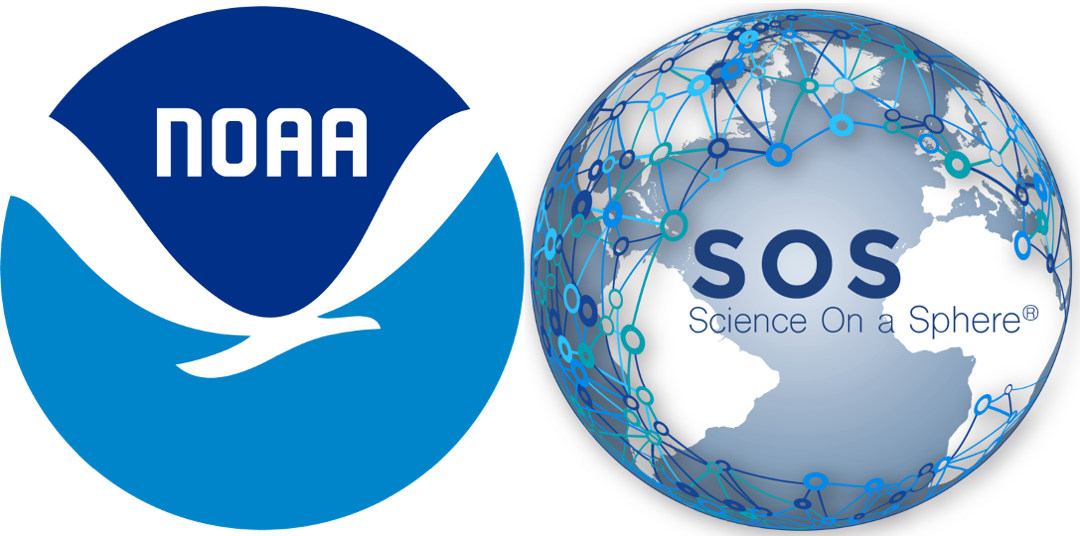
For more information about how to take observations, visit the GLOBE Eclipse landing page.
Eclipse Facilitator Resources
For more resources for Library Facilitators visit the GLOBE Observer Library Guide: Eclipse Library Resources. For more resources geared toward individual observers, visit the Eclipse Resource Library (incluyendo recursos sobre eclipses en español). We provide suggestions for using these resources at eclipse events in Tips for Events with GLOBE Eclipse. Find videos, graphics and other useful media resources related to GLOBE and the upcoming eclipse in our GLOBE Eclipse Media Kit. Salta a recursos en español. Accéder aux ressources en français.
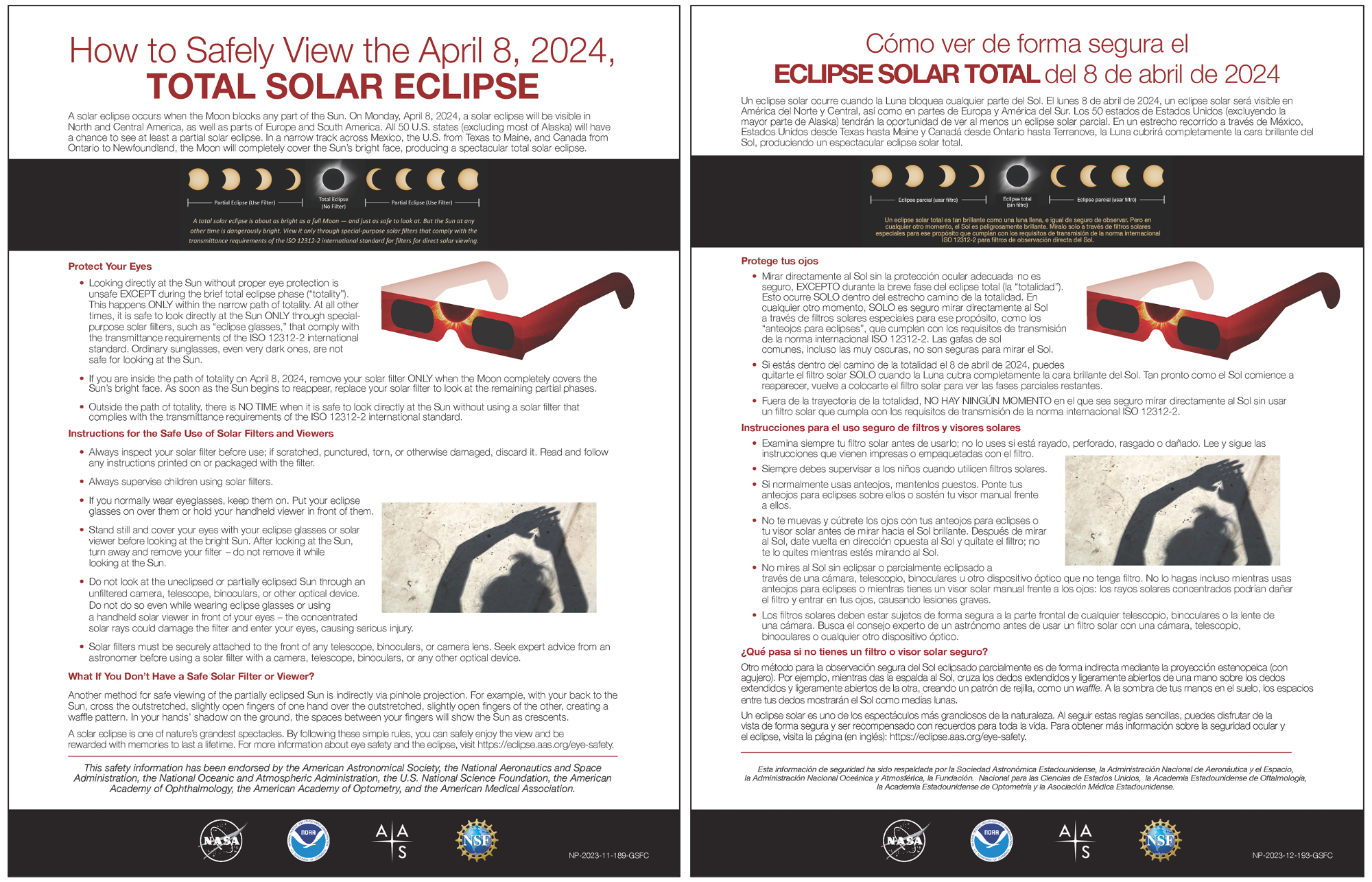
2024 Total Solar Eclipse Safety Sheet - Multilingual
On April 8, 2024, a total solar eclipse will cross Mexico, the United States, and Canada. Except during the brief total phase of a total solar eclipse, when the Moon completely blocks the Sun’s bright face, it is not safe to look directly at the Sun without specialized eye protection for solar viewing. This safety sheet, available in English and Spanish, provides information on how to safely experience the total solar eclipse.

Civil Air Patrol Solar Eclipse Resources
To make the most of this rare astronomical event, the Civil Air Patrol has partnered with GLOBE Eclipse to give youth the opportunity to become Solar Eclipse Citizen Scientists, even outside the path of totality. All classroom, community, and homeschool educators anywhere in the United States can register as a CAP Solar Eclipse Classroom and choose to implement one of four classroom missions: Astronomy, Biology, Weather, and Citizen Science. Interested educators can register their educational group for the project and find detailed guidance and educational resources for each mission via the linked website.
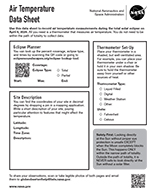
Eclipse Air Temperature Data Sheet
No phone? No problem! Use this paper data sheet to record air temperature during the solar eclipse and submit your observations via email. Contact Us (under the About menu) to learn how to submit the data. You can use the Excel spreadsheet to create a graph of your data.
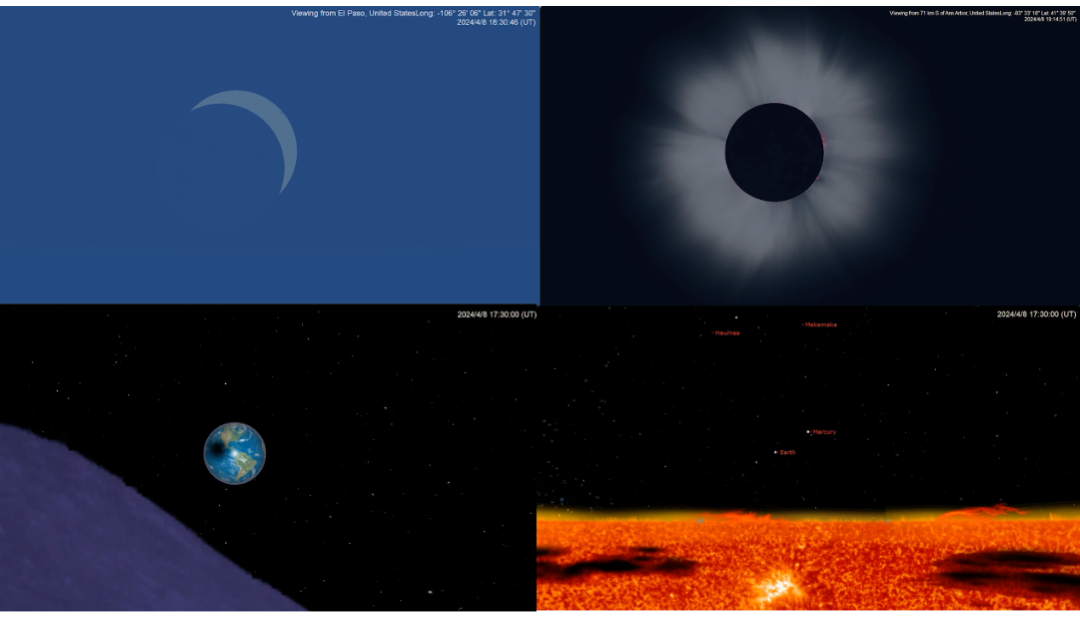
Eclipse Animations - Views from Various Perspectives
Animated simulations of what the eclipse will look like in the sky from a few different locations, as well as views from the Moon and the Sun before moving in toward Earth. The locations on Earth are: El Paso, Texas; San Antonio, Texas; Washington, D.C.; Niagara Falls, Canada; and Toledo, Ohio. Time in UTC and location latitude/longitude shown in the upper corner. Time flow is 250x and starting time is shown in the filename. If used in a presentation, please give the following credit: Simulations by Dr. Matt Marone, Mercer University, Department of Physics, Macon, GA, USA. Software used: Starry Night College V8, Simulation Curriculum Corp.
Views from various points on Earth [zipped folder, 25.2 MB]
View from the Sun, moving toward Earth [zipped folder, 56.2 MB]
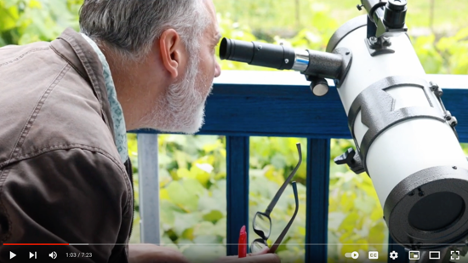
Eclipse Video from Mercer University
[7:23] GLOBE Educator from Mercer University Dr. Matt Marone, his colleague Dr. Philip B. Gallagher, and Joshua Slaton, a Mercer University Engineering and Technical Communication student, prepared this video about solar eclipses (specifically the April 8th, 2024 total solar eclipse) for educational use by the GLOBE community.
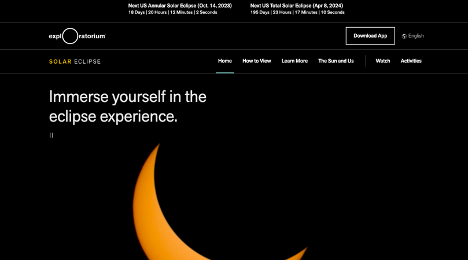
Exploratorium Eclipse Resources
The eclipse website from the Exploratorium museum in San Francisco (supported by a NASA grant) includes resources about eclipses, activities, an informational app, and more. On the days of the annular and total solar eclipses, they will also be streaming live telescope feeds and educational programming.
Exploring the Solar System: Solar Eclipse
"Exploring the Solar System: Solar Eclipse" is a hands-on activity demonstrating how the particular alignment of the Sun, Earth, and Moon can cause an eclipse. Visitors investigate the positions of these objects to create shadows and learn about solar eclipses. This activity was designed specifically in advance of the total solar eclipse that will traverse the continental United States in August, 2017, but can be used anytime. Las actividades también están disponibles en español.
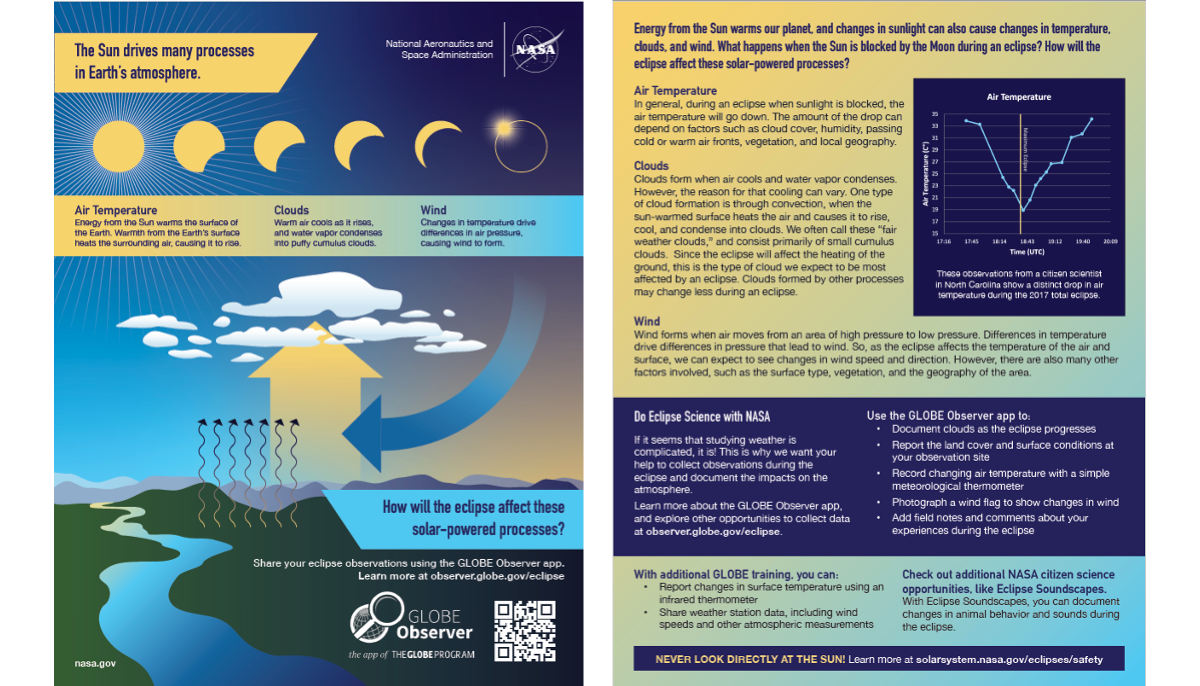
GLOBE Eclipse Atmosphere One-Pager
Energy from the Sun warms our planet, and changes in sunlight can also cause changes in temperature, clouds, and wind. What happens when the Sun is blocked by the Moon during an eclipse? How will the eclipse affect these solar-powered processes? This one-pager describes some the changes in the atmosphere you might observe during eclipses, and ways you can collect data during the events.
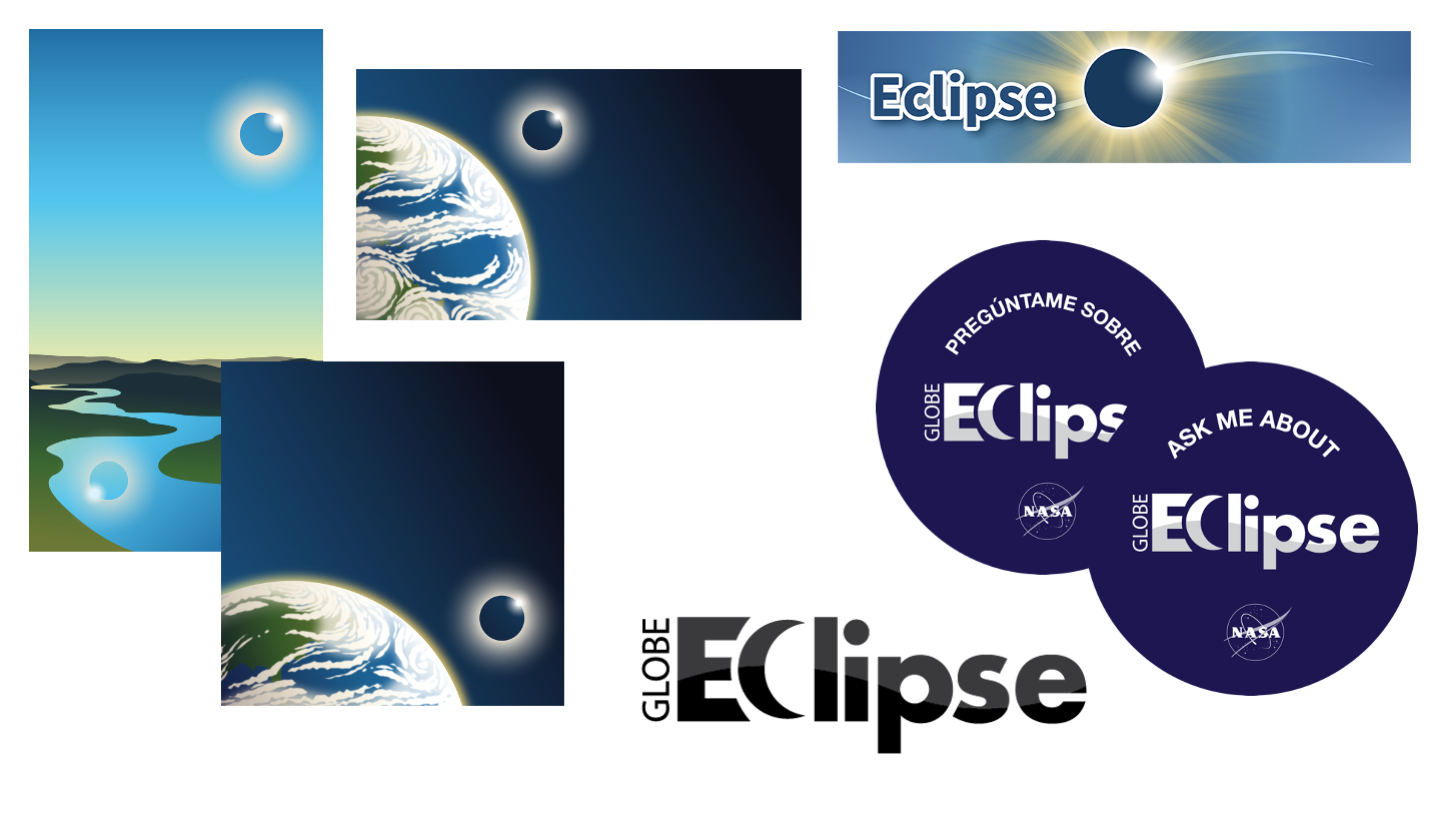
A selection of graphics assets related to GLOBE Eclipse, suitable for making custom presentations and social media posts. A zipped folder (19.6 MB) with: backgrounds to create shareables sized for Facebook, X, and Stories/Reels; two sizes of the app selector button art; text logos saying GLOBE Eclipse in white and black; and round signs that say "Ask Me About ... GLOBE Eclipse" and "Pregúntame sobre ... GLOBE Eclipse"
Sample shareables (Facebook and X formats, in both English and Spanish)
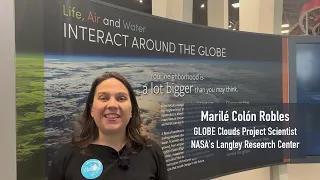
An introductory video for GLOBE Eclipse observations and the GLOBE Eclipse Challenge: Clouds and Our Solar-Powered Earth.
Download English Video [47.5 MB]
English Video on YouTube [1:07]
Download Spanish Video [56.8 MB]
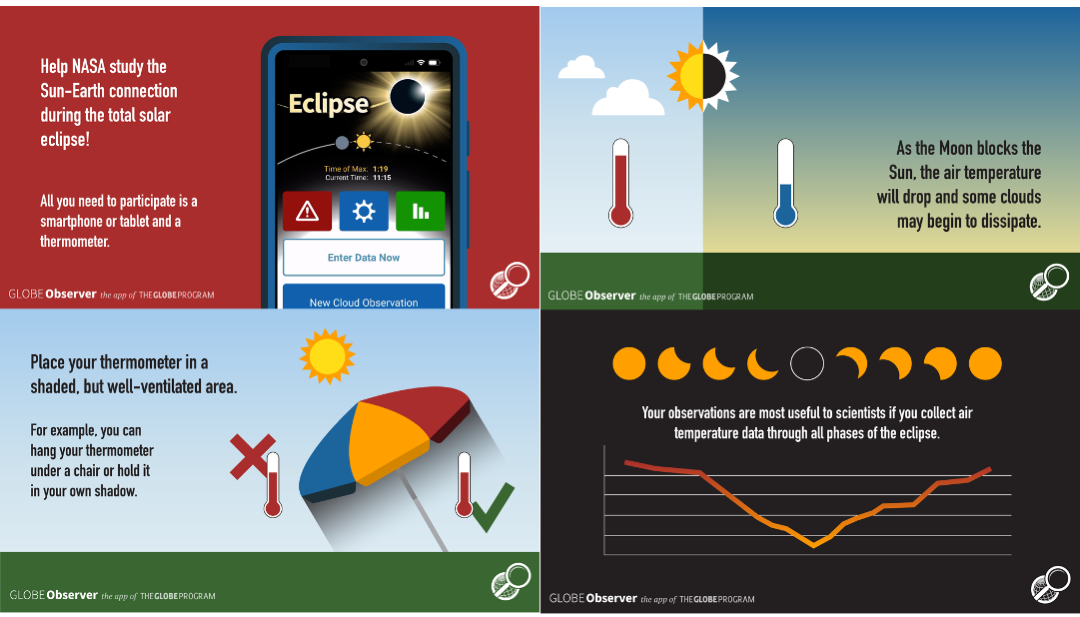
A set of graphics giving the basics about how to use the Eclipse tool for observations. Includes a document with suggested alternate text for the images.
Eclipse media graphics, PNGs plus a PDF with alt text (zipped folder, 1.5 MB)
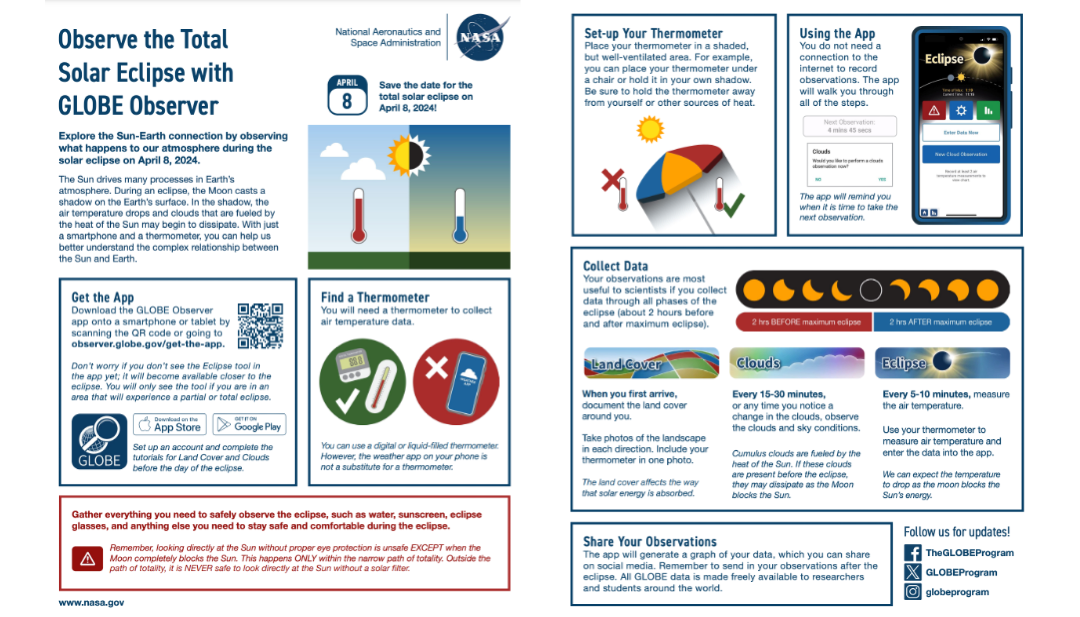
GLOBE Eclipse Overview One-Pager
This one-pager gives an overview of why we’re interested in your observations and how to participate in collecting data with the GLOBE Eclipse tool.
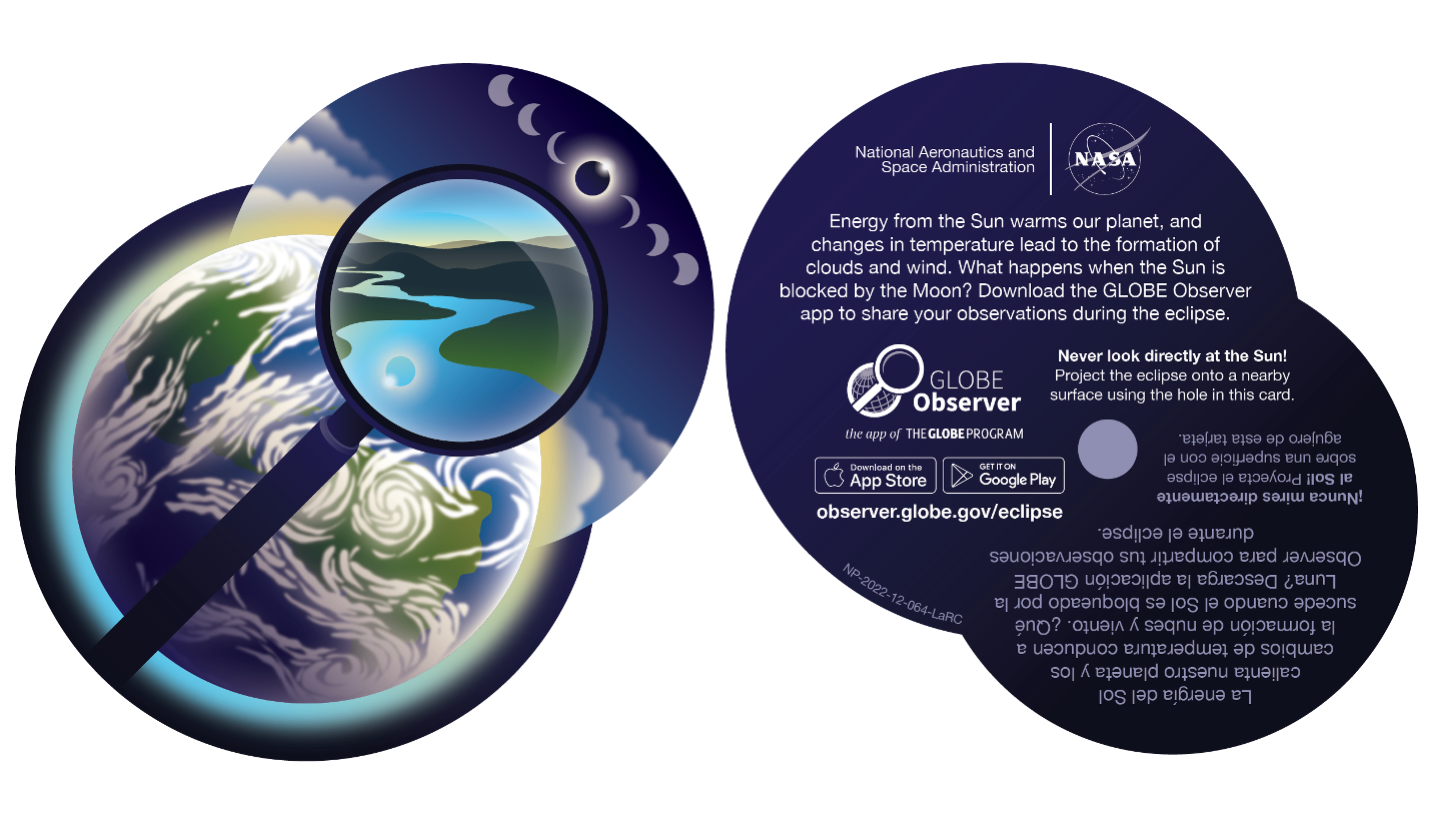
GLOBE Eclipse Pinhole Postcard
Dual-language (English and Spanish) postcard about observing the eclipse with GLOBE Observer, with a space in the middle that can be punched out to use as a pinhole projector. The text reads: "Energy from the Sun warms our planet, and changes in temperature lead to the formation of clouds and wind. What happens when the Sun is blocked by the Moon? Download the GLOBE Observer app to share your observations during the eclipse. Never look directly at the Sun! To use the card to view the eclipse indirectly, stand with your back to the Sun and look at the card's shadow. The shape of the hole in the shadow will mirror the shape of the eclipsed Sun.
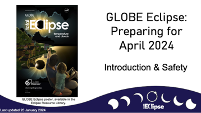
GLOBE Eclipse Presentation: Introduction, Safety & App Basics (Total Eclipse)
A presentation giving an introduction to GLOBE Eclipse: the Earth science angle on eclipses and why to study them with citizen science observations, eclipse viewing safety tips, how to use the GLOBE Eclipse tool in the app, and some supplemental observing tips. (Updated for April 2024).
PPTX file with embedded videos (48.9 MB)
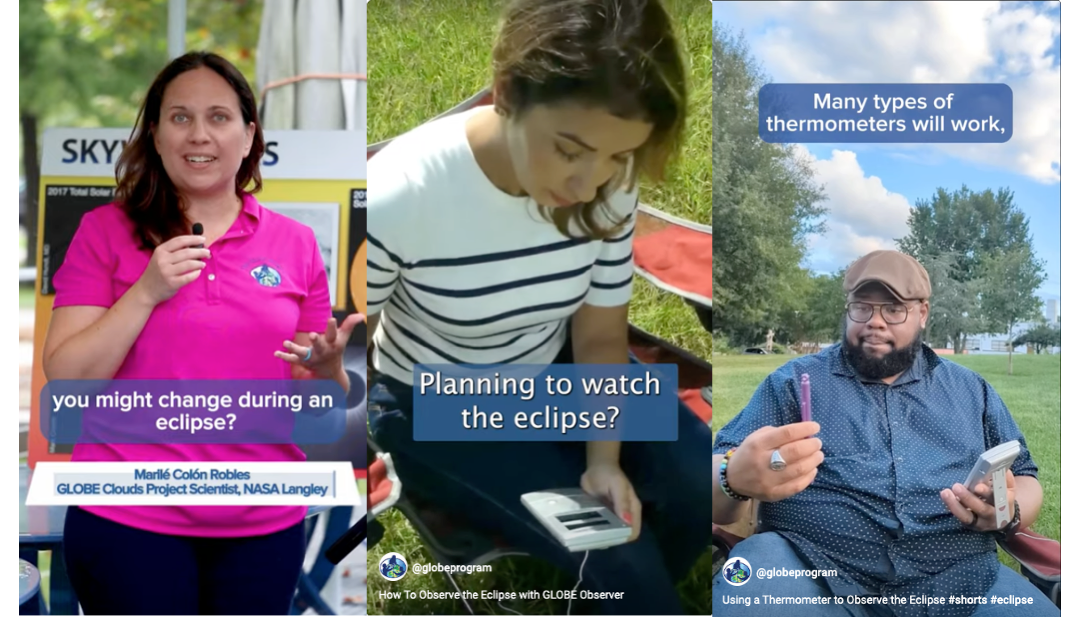
Short reels, each under a minute, describing various aspects of using the GLOBE Eclipse tool and the Eclipse Challenge. Note: Some of these are versions of the reels with the end title indicating the annular eclipse in October 2023, but will be replaced with new version for the total solar eclipse as soon as they are available. (Spanish versions of these reels can be found in the Spanish resources section.)
Eclipse Challenge, Observations with GLOBE Observer [0:50]
Satellites and the Sun-Earth Connection [1:00]
Taking Eclipse Observations with GLOBE Observer! [0:55] (annular version)
How to Observe the Eclipse with GLOBE Observer [0:55] (annular version)
Using a Thermometer to Observe the Eclipse [0:51] (annular version)
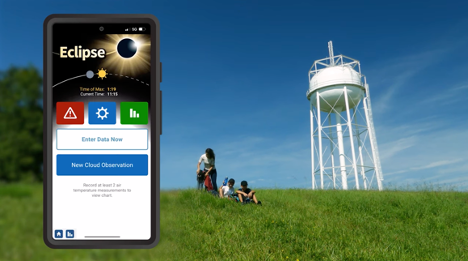
How to Observe with GLOBE Eclipse
[2:47] This video goes through the steps to participate in data collection, from selecting an air temperature thermometer to setting up the GLOBE Observer app, as well as how to watch the eclipse safely (you will need solar viewing glasses or an indirect viewing method for all but the brief few minutes of totality.)
Video in reel format, English [vertical, 0:55]

How to Use the GLOBE Eclipse Tool
A printable guide on how to take observations during the solar eclipse with GLOBE Observer. Available as a one-pager or a trifold brochure. For best results on the trifold brochure, print double-sided at 100% scale and fold accordion-style. In Adobe Acrobat, we recommend the following settings: Actual size, Print on both sides of paper, Flip on short edge.
PDF File (one-pager) - English
PDF File (foldable to trifold brochure) - English
Archivo PDF (una página) - español
Archivo PDF (doblar en folleto) - español
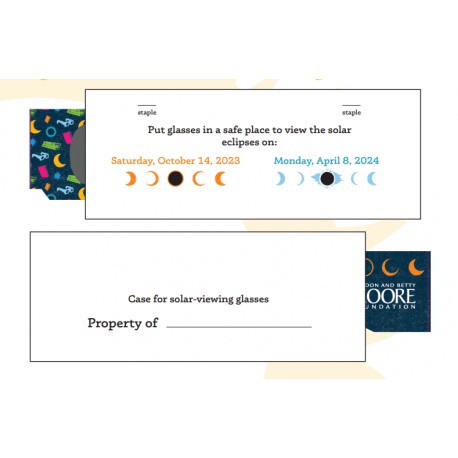
Make a Protective Case for Your Solar-Viewing Glasses
This activity from the STAR_Net Libraries STEM Activity Clearinghouse guides patrons in making a personalized protective case to keep their solar viewing glasses safe in between the October 2023 and April 2024 eclipses.
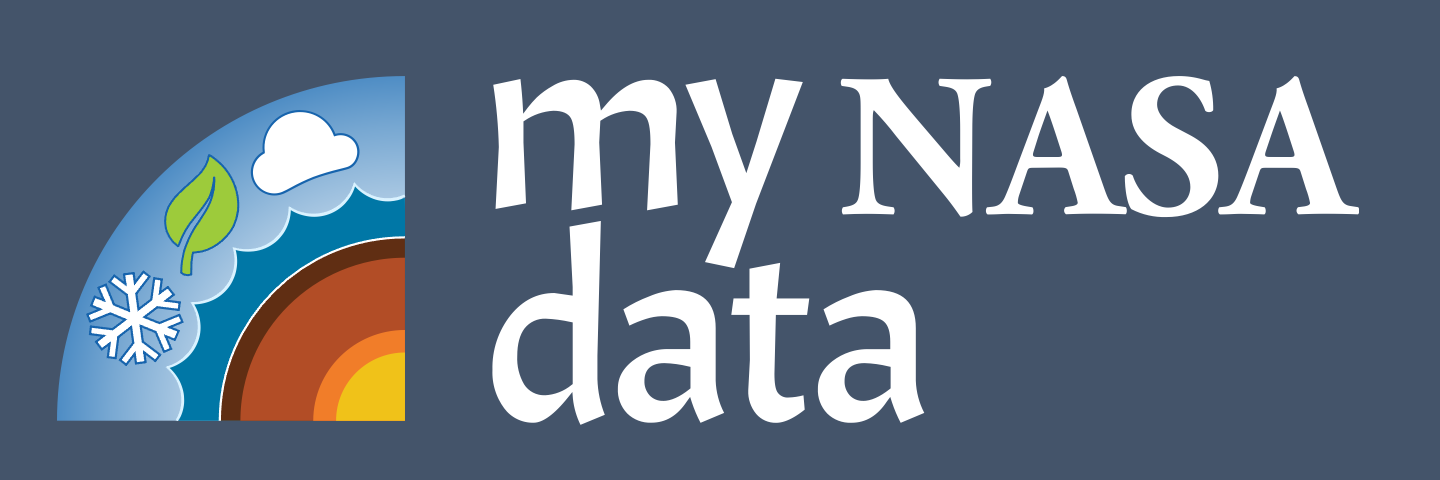
My NASA Data Eclipse Phenomenon Page
The My NASA Data Solar Eclipse page features, mini-lessons, interactives and lesson plans for grades 3-12, including explorations of why eclipses occur, the differences between solar and lunar eclipses, how to observe the corona and make predictions about it's appearance during upcoming eclipses, and more.
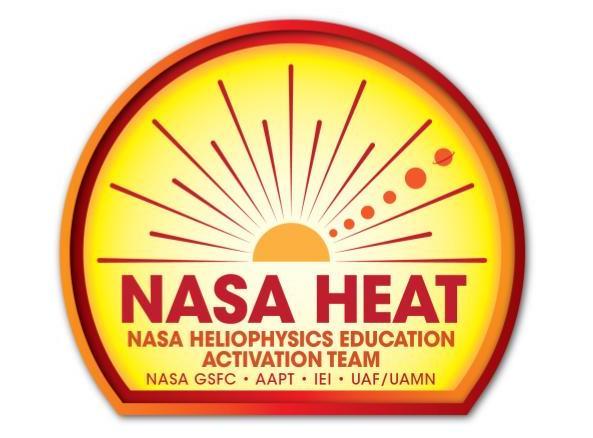
NASA HEAT Eclipse Training Slides
Eclipse training slides produced by the NASA Heliophysics Education Activation Team (HEAT). Topics of the slides include the science of eclipse, eclipse viewing safety, and suggestions for engaging the public in eclipse activities. Note: The link takes you to an optional survey collecting information about how the resources will be used before providing a link to the folder of resources.

NISE Net: Preparing for a Solar Eclipse Slide Presentation
Editable slideshow presentation with detailed presenter notes prepared by the National Informal STEM Education (NISE) Network for the 2023 and 2024 solar eclipses including topics such as: what are solar eclipses, how to enjoy a solar eclipse safely, solar eclipse resources for everyone.
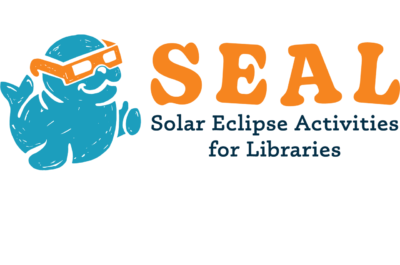
Solar Eclipse Activities for Libraries (SEAL) Webinars
Various webinars with resources for libraries related to the eclipse, including viewing eclipses through a cultural lens, using citizen science during the eclipse, and featuring bilingual and Spanish eclipse resources.
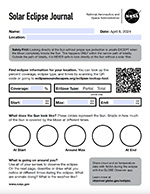
Use this journal page to record what you see during the solar eclipse, both how much of the Sun is covered by the Moon at different times, as well as observations of the environment around you (animal behavior, weather, etc.) during different periods of the eclipse. NOTE: It is never safe to look directly at the Sun without eye protection. The only safe way to look at the Sun is through special-purpose solar filters such as “eclipse glasses” or hand-held solar viewers.

Videos cortos ("reels"), cada uno de menos de un minuto, que describen varios aspectos del uso de la herramienta GLOBE Eclipse y el Reto GLOBE Eclipse. Nota: Unos de los videos son versiones con título final que indica el eclipse anular en octubre de 2023, pero serán reemplazadas por una nueva versión para el eclipse solar total tan pronto como estén disponibles.
Reto Eclipse, Observaciones con GLOBE Observer [0:57]
Los Satélites y la Conexión Sol-Tierra
Tierra con Energía Solar [1:00]
Cómo Observar el Eclipse con GLOBE Observer [0:55] (versión annular)

Cómo observar con la herramienta GLOBE Eclipse
[3:43] Este video explica los pasos para participar en la recopilación de datos, desde seleccionar un termómetro de temperatura del aire hasta configurar la aplicación GLOBE Observer, además de cómo observar el eclipse de manera segura (necesitará gafas de visualización solar o un método de visualización indirecta para todos, excepto los breves minutos de la totalidad.)
Vídeo corto ("reel"), español [vertical, 0:55]

Cómo usar la herramienta GLOBE Eclipse
Guía imprimible sobre cómo realizar observaciones durante el eclipse solar con GLOBE Observer. Disponible en formato de una página o tríptico. Para obtener los mejores resultados, imprime a doble cara a escala 100% y dobla en forma de acordeón. En Adobe Acrobat, recomendamos los siguientes ajustes: Tamaño real, Imprimir en ambas caras del papel, Voltear en borde corto.
Archivo PDF (una página) - español
Archivo PDF (doblar en folleto) - español
PDF File (one-pager) - English
PDF File (foldable to trifold brochure) - English

Eclipse 2024 - Información sobre seguridad
El 8 de abril de 2024, un eclipse solar total atravesará México, Estados Unidos y Canadá. Excepto durante la breve fase total de un eclipse solar total, cuando la Luna bloquea completamente la cara brillante del Sol, no es seguro mirar directamente al Sol sin protección ocular especializada para la observación solar. Esta hoja de seguridad, disponible en inglés y español, tiene información sobre cómo experimentar de manera segura el eclipse solar total.

Gráficos informativos sobre GLOBE Eclipse
Un conjunto de gráficos que explican los conceptos básicos sobre cómo utilizar la herramienta Eclipse para observaciones. Incluye un documento con texto alternativo sugerido para las imágenes.
Eclipse media graphics, PNGs plus a PDF with alt text (zipped folder, 1.5 MB)
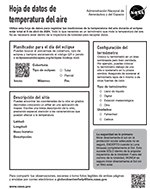
Hoja de datos de temperatura del aire
¿No tienes teléfono? ¡No hay problema! Utiliza esta hoja de datos en papel para registrar la temperatura del aire durante el eclipse solar y envía tus observaciones por correo electrónico. Puedes utilizar la hoja de cálculo de Excel para crear un gráfico de tus datos.
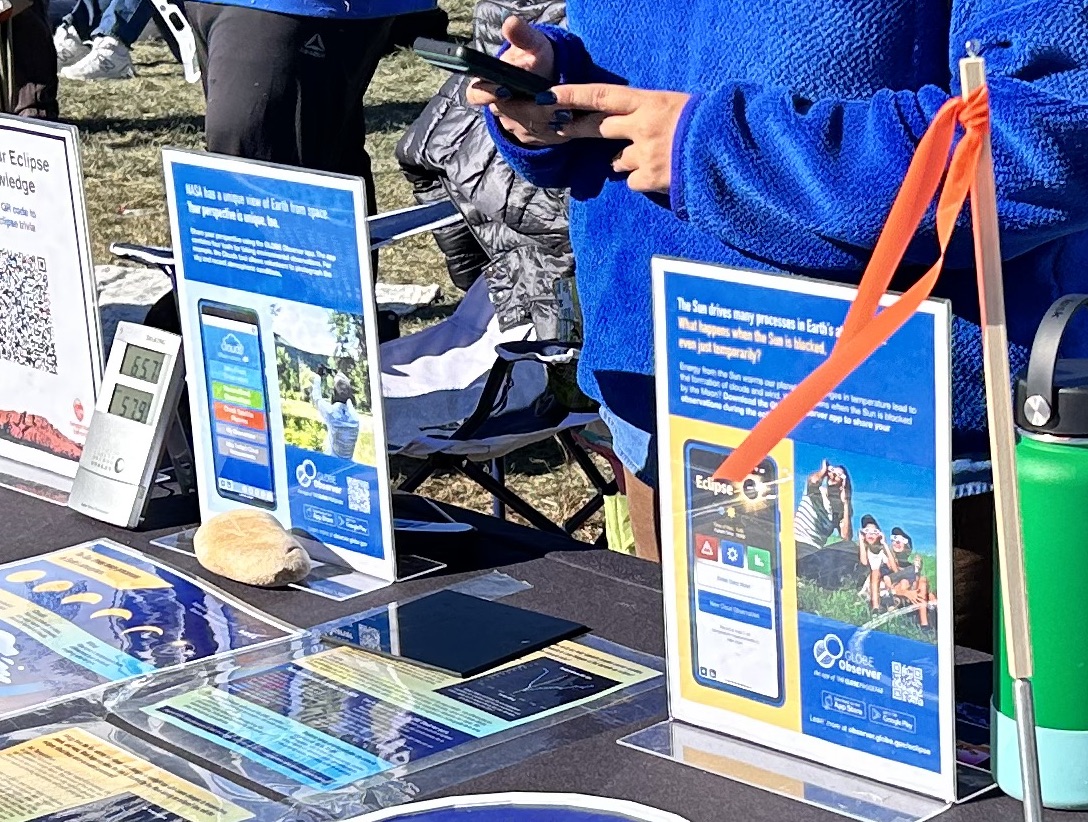
Letreros para usar en el evento de presentación del eclipse. Uno tiene texto sobre observaciones durante el eclipse, el otro tiene un recordatorio que las observaciones de las nubes siempre son bienvenidas usando la aplicación GLOBE Observer.
Letrero de mesa sobre observaciones de nubes después del eclipse

Página con un descripción general de GLOBE Eclipse
Esta página ofrece una descripción general de las razones por qué estamos interesados en sus observaciones y cómo participar en la recopilación de datos con la herramienta GLOBE Eclipse.

Página sobre la atmósfera y GLOBE Eclipse
La energía del Sol calienta nuestro planeta y los cambios en la luz solar también pueden causar cambios en la temperatura, las nubes y el viento. ¿Qué sucede cuando la Luna bloquea el Sol durante un eclipse? ¿Cómo el eclipse afectará estos procesos impulsados por energía solar? Esta página describe algunos de los cambios en la atmósfera que puede observar durante los eclipses y las formas en que puede recopilar datos durante los eventos.
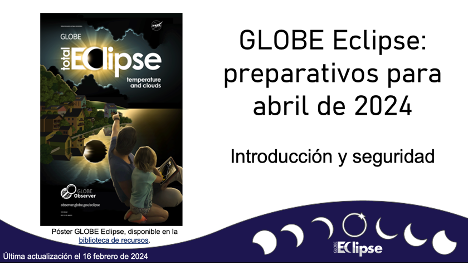
Presentación GLOBE Eclipse: Introducción, Seguridad, y Conceptos Básicos de la App (Eclipse Total)
La energía del Sol calienta nuestro planeta y los cambios en la luz solar también pueden causar cambios en la temperatura, las nubes y el viento. ¿Qué sucede cuando el Sol es bloqueado por la Luna durante un eclipse? ¿Cómo afectará el eclipse a estos procesos impulsados por la energía solar? Esta página describe algunos de los cambios en la atmósfera que se pueden observar durante los eclipses y las formas en que se pueden recopilar datos durante los eventos.
Archivo PPTX con videos integrados
Presentación de Google Slides (será necesario hacer una copia)

Recursos gráficos de GLOBE Eclipse
Una selección de recursos gráficos asociados con GLOBE Eclipse, para usar en presentaciones personalizadas y publicaciones en redes sociales. Una carpeta comprimida (19,6 MB) con: fondos en tamaños varios para crear publicaciones en redes sociales Facebook, X e Stories/Reels; dos tamaños del arte del botón selector de la herramienta Eclipse; logos de texto que dicen GLOBE Eclipse en blanco y negro; y carteles redondos que dicen "Ask me about...GLOBE Eclipse" y "Pregúntame sobre...GLOBE Eclipse"

Taller de Observación del Eclipse de Sol con la App GLOBE Observer y una Cámara Obscura
[59:16] Un taller sobre métodos de observación del eclipse de sol. Puede aprender sobre el Programa GLOBE y como puede usar la app GLOBE Observer para tomar datos científicos durante el eclipse. Tambien hay una demostración del proceso de construir una cámara oscura.

Tarjeta bilingüe (inglés y español) sobre la observación del eclipse con GLOBE Observer, con un espacio en el medio que se puede perforar para usar como proyector durante el eclipse. El texto dice: "La energía del Sol calienta nuestro planeta y los cambios de temperatura conducen a la formación de nubes y viento. ¿Qué sucede cuando el Sol es bloqueado por la Luna? Descarga la aplicación GLOBE Observer para compartir tus observaciones durante el eclipse. ¡Nunca mires directamente al Sol! Proyecta el eclipse sobre una superficie con el agujero de esta tarjeta."

Video introductorio para el Reto GLOBE Eclipse
Un video introductorio para observaciones con GLOBE Eclipse y el Reto GLOBE Eclipse: Nubes, Sol y Tierra.
Descargar video en español [56.8 MB]
Video en español en YouTube [1:20]
Archivo de subtítulos en español (SRT)
Descargar video en inglés [47.5 MB]
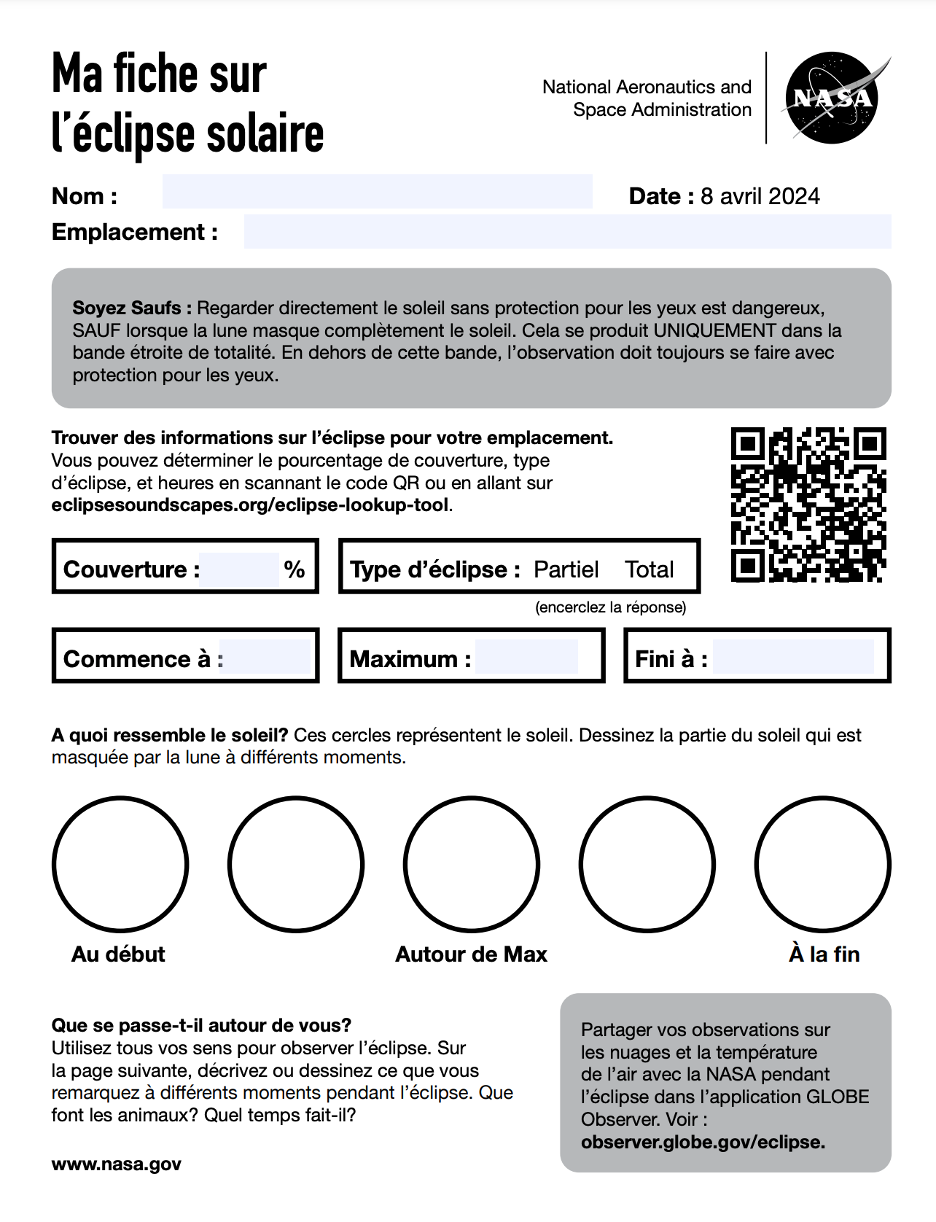
Ma fiche sur l'éclipse solaire
Utilisez cette page pour noter ce que vous voyez pendant l'éclipse solaire: la portion du soleil couvert par la lune à différents moments, ainsi que les observations de l'environnement qui vous entoure (comportement des animaux, météo, etc.) à différentes périodes de l'éclipse. ATTENTION: Il n'est jamais prudent de regarder directement le Soleil sans protection pour les yeux. La seule façon d’observer le Soleil sans dommage est avec les filtres solaires spéciaux tels que des « lunettes à éclipse », autres filtres de protection, ou des méthodes indirectes.

Comment utiliser l'outil GLOBE Eclipse
Un guide imprimable sur la façon de faire des observations pendant l'éclipse solaire avec GLOBE Observer. Disponible sous forme de brochure d'une page ou de trois volets. Pour de meilleurs résultats sur la brochure à trois volets, imprimez recto verso à 100 % et pliez en accordéon. Dans Adobe Acrobat, nous recommandons les paramètres suivants : Taille réelle, Imprimer sur les deux faces du papier, Retourner sur le bord court.
Fichier PDF (une page) - français
Fichier PDF (à plier dans une brochure) - français
PDF File (one-pager) - English
PDF File (foldable to trifold brochure) - English
Books

Use WorldCat to search libraries near you, read reviews, and find editions in different languages.
Books for Kids: Eclipse books, Clouds books
Books for Teens and Adults: Eclipse books, Clouds books









